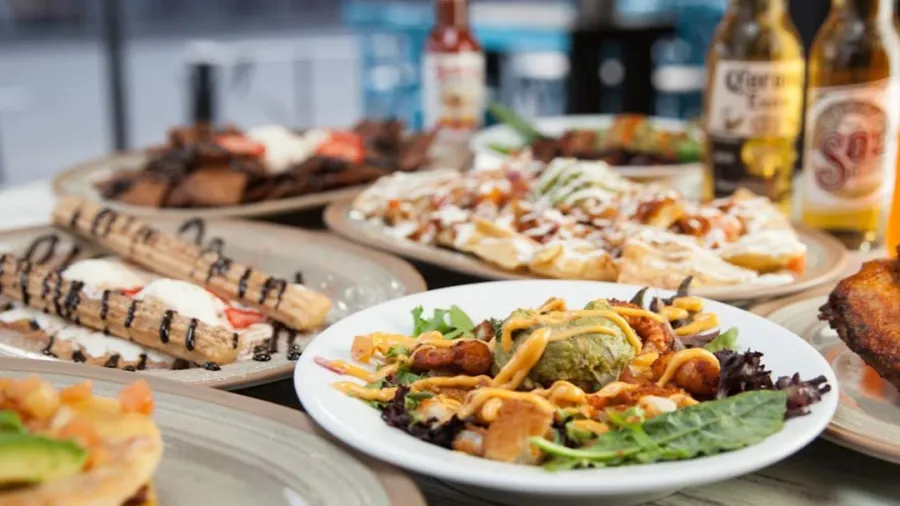
‘Restaurant precincts with significant appeal’: How Burrito Bar is forging its path to become a multi-brand franchisor
CEO Shaun Butcher details how the company found success in its early adoption of virtual brands and how it is informing its approach to growth.
The group behind Burrito Bar is looking to cement itself as a multi-brand franchisor this year, incorporating two to three brands in new and upcoming builds and is finalizing plans for its first international brand import this month.
“This model has proven especially successful for our Franchise Partners as the brands complement each other very well, allowing our Franchise Partners to create their own small restaurant precincts with significant appeal to customers,” chief executive officer Shaun Butcher told QSR Media. “Combining multiple brands in a single location also achieves significant economies of scale and synergies, leading to far higher levels of profitability and return on investment for Franchise Partners.”
As of this writing, the company has 41 Burrito Bars, four Smokin Burgers n’ Ribs and ten Sweet Republick locations. Butcher says they are “hopeful” of having the first restaurants with the import brand open by mid-year. (In a separate media release, New Zealand-based Hell Pizza revealed it is working with the restaurant group behind Burrito Bar chain in order to establish the brand in Australia, starting with a location in Brisbane. It currently has 74 franchises throughout New Zealand and more than 1,100 staff.)
New restaurants are currently being built or scheduled in NSW, ACT, VIC, NT and QLD, he added.
“We have several additional locations scheduled to open almost every month across all brands for the rest of the year and are hoping for a total of at least 26 more locations before the year end,” Butcher revealed.
The brand is also scouting more drive-thru locations for our brands throughout the country, having “added a significant dimension” to the business in locations they have been able to open one.
The plans come amidst growing average restaurant sales throughout the last few years, which “dramatically accelerated”, Butcher said, in the last couple of months as COVID restrictions have been eased.
Upskilling their network is also an important focus for the group this year, joining other brands that are making investments to staffing. Attracting, training and retaining people has also been a priority whilst able to avoid any critical labour shortages.
“As our restaurants have gotten bigger and more successful we have employed more people and needed greater management skills compared to several years ago. This is necessitating continued investment into resources to support training and development, and ensure we can keep up with our own growth,” Butcher explained.
On the technology front, they are planning the launch of our first customer app for Burrito Bar in May, followed closely by Sweet Republick and Smokin Burgers n’ Ribs — a plan that was delayed by COVID.
Simplifying order processing from third party aggregators is being done whilst their Order At Table functionality is currently in trial and rolling out to all our restaurants.
Butcher anticipates needing to “continue being proactive”, especially with supply chain and labour sourcing.
“Our growing volumes have enabled us to keep prices down and even lower them across key stock items in recent times,” he said. “To date, we have been able to work with all our key suppliers to prevent any major disruptions to [the] supply chain which have unfortunately affected so many others in our industry.”
Butcher also expects to see a slight trend back towards dine-in again but clarified that take-away, delivery and drive-thru “aren’t going away and will remain a strong part of our business model.”
“Our very early adoption of virtual brands was key to injecting extra profitability into our network 4 years ago, but this has now been widely adopted by many in the market. The evolution of this for us over the last 2 years has seen us bringing these virtual brands to life with a real physical presence as part of our multi-brand locations,” he added.
“In addition to our multi-brand locations, we are continuing to maintain a significant degree of flexibility in our restaurant models. This enables us to be successful in a full range of locations from small high foot traffic locations to large dining precincts, premium shopping centres, small suburban shopping centres and drive-thrus. The cookie cutter expansion model can obviously work well for some players in the market, but for us being flexible and responsive to local markets and locations has been a key to our success.”
Butcher teased its menus will continue to evolve, aiming to counteract simplified menus being done by other brands.
“The diversity of our menus and the quality of our food remains one of our key strengths, especially as some of our competitors have shrunk their menus in recent times,” he said.
“Overall, we see genuine and continual evolution and flexibility of the business at all levels as crucial to our success. We would see staying stagnant and clinging longingly to old business models and ways of thinking as one of the most dangerous things a network such as ours could do in the current market,” he concluded.
























